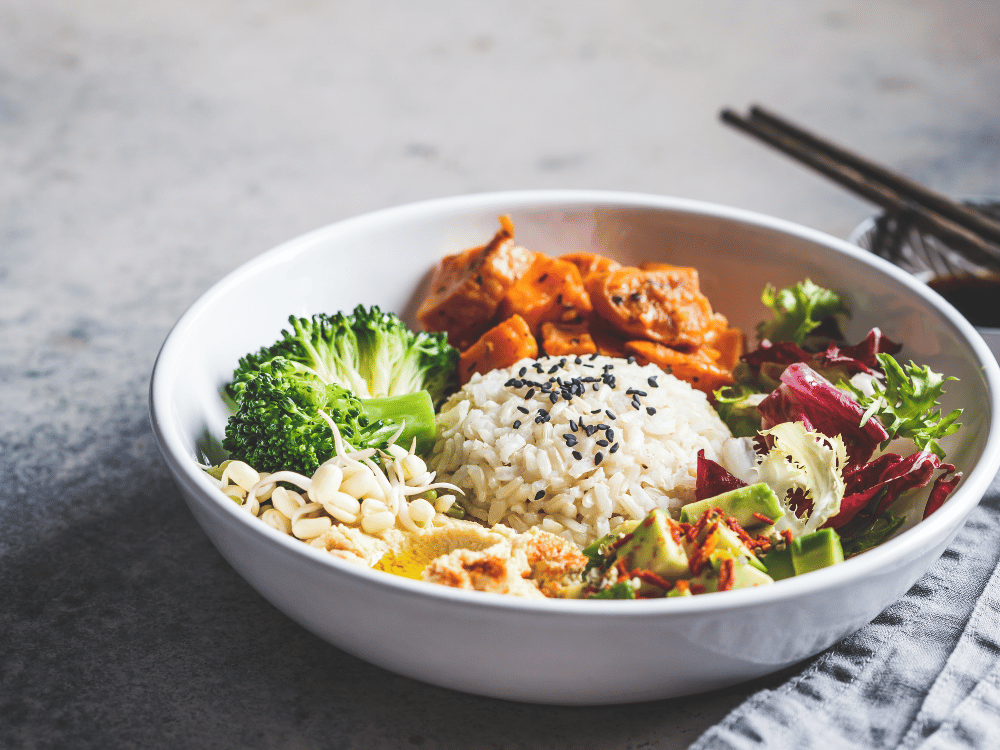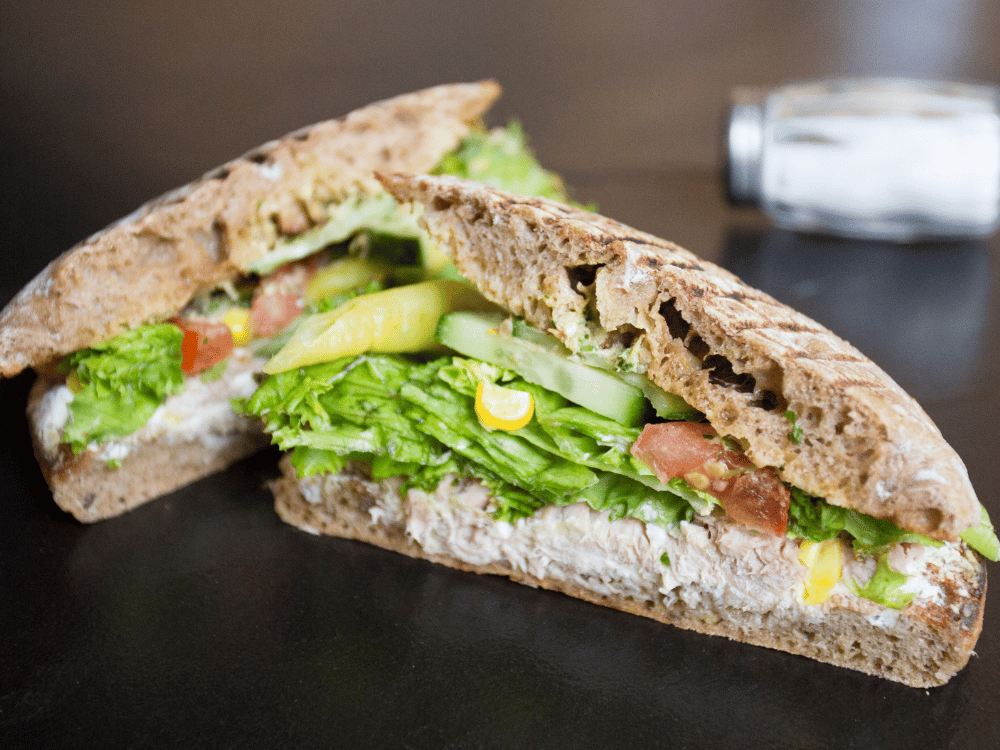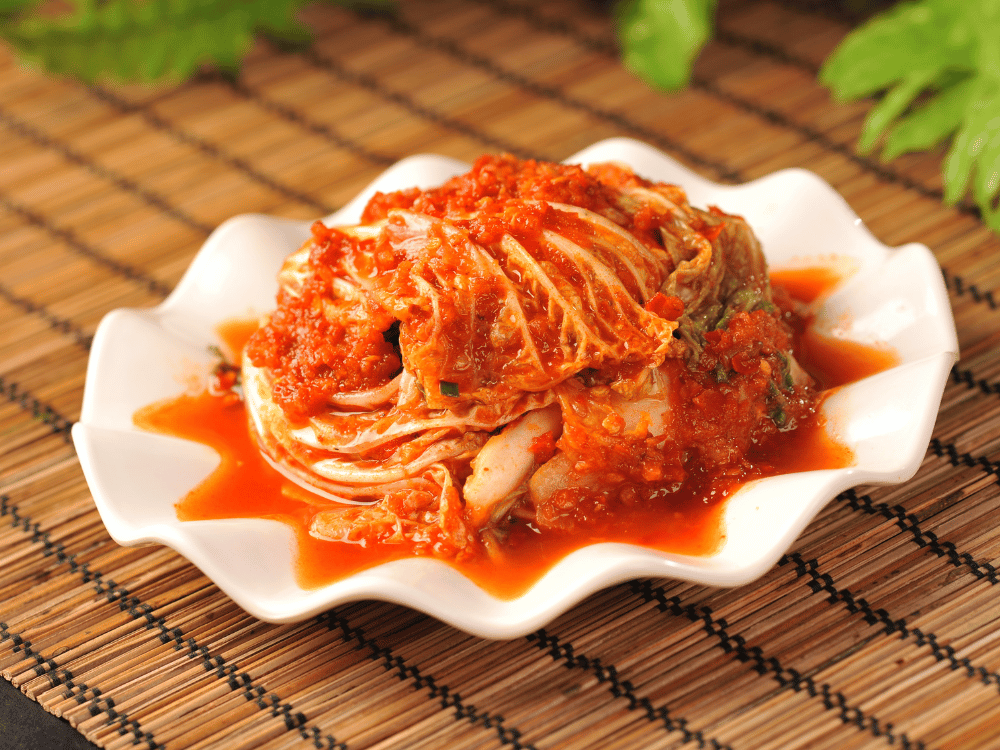In today's world where we are exposed to various toxins from the environment, as well as inadequate nutrition, we often forget the importance of taking care of our physical and mental health. Detoxification of the body becomes a key component of preserving and improving our overall well-being. One of the ways to achieve internal balance and revitalization of body and spirit is through a macrobiotic diet.
Macrobiotics is a nutritional philosophy that originates from ancient Japanese traditions and focuses on achieving harmony between nature, body and mind. This diet is based on the consumption of whole and natural foods, which reduces the intake of processed foods and toxins. In this blog, we will explore how a macrobiotic diet can serve as an effective tool for detoxifying the body.
Macrobiotics as a holistic approach
Macrobiotics stand out as a holistic approach to body detoxification. This philosophy does not view the body in isolation, but sees it as an inseparable part of a larger system that includes both emotional and mental aspects.
The physical aspect of a macrobiotic diet focuses on the intake of foods that contribute to optimal health. This means consuming whole and natural foods such as whole grains, vegetables, legumes and algae. These food choices are rich in fiber, vitamins, and minerals, which help the body eliminate toxins effectively. Also, the intake of sugar, refined oils and processed food is avoided, which reduces the burden on the liver and other organs responsible for detoxification.
The emotional aspect of macrobiotic nutrition is reflected in the promotion of emotional balance. This diet promotes awareness of how food affects our emotions and mood. Through proper nutrition, a person can become more aware of the connection between nutrition and emotional reactions, which can help reduce stress and anxiety.
The mental dimension of macrobiotics encourages awareness and concentration. Through a balanced diet, the body receives the necessary nutrients for optimal brain functioning. In addition, the macrobiotic approach emphasizes the importance of versatility and spiritual harmony, which can help achieve inner peace and balance of mind.
Overall, macrobiotics is not limited to physical health. It promotes inner balance through a holistic approach that encompasses physical, emotional and mental aspects, making it an effective tool for detoxifying the entire body and achieving overall well-being.
Alkaline balance and cleansing
Macrobiotic diet it is often highlighted as an effective way of maintaining optimal pH balance in the body, thereby supporting the natural process of eliminating harmful toxins. The key idea behind this nutritional philosophy is that food can significantly affect the body's pH value, which is measured on a scale from acidity to alkalinity. Maintaining a balance on the slightly alkaline side of this scale (pH value around 7) is considered beneficial for health.
A macrobiotic diet promotes the intake of foods that are alkaline in nature, such as whole grains, vegetables, seaweed, and fermented products such as miso and tamari. These ingredients help the body maintain an alkaline balance, counteracting excess acids that can come from an unhealthy diet or stress.
Maintaining an alkaline balance in the body can improve the efficiency of organs responsible for detoxification, such as the liver. When the body maintains an optimal pH balance, detoxification processes become more efficient, allowing the body to more effectively eliminate harmful substances and toxins.
A macrobiotic diet also encourages hydration through the consumption of pure water and teas, which also help maintain pH balance. Combining this diet with practices such as calming breathing techniques and meditation can further contribute to the body's internal balance.
Finally, a macrobiotic diet is one way to maintain an alkaline balance in the body through nutrition, thus supporting the detoxification process and improving overall health.

Selection of foods for detoxification
Macrobiotic nutrition is known for its emphasis on choosing certain foods that play a key role in naturally cleansing the body and strengthening the immune system. These five foods represent the basis of macrobiotic nutrition and bring numerous benefits for detoxification and strengthening the immune system.
Whole grains
Oats, barley, millet, and other whole grains are rich in fiber, minerals and complex carbohydrates. They support digestion, help eliminate toxins from the gut, and maintain stable blood sugar levels, which are key to a healthy immune system.
Vegetables
Especially dark green leafy vegetables like kale, chard, and spinach, as well as root vegetables like carrots and beets, are rich in antioxidants, vitamins, and minerals. These foods help the body detoxify and neutralize free radicals.
Seaweed
Algae like nori, dulse, and wakame are key components of a macrobiotic diet. They are rich in iodine and minerals, supporting thyroid function and helping to detoxify the body of heavy metals.
Fermented products
Miso, tamari, and kimchi are fermented foods that are rich in probiotics, beneficial bacteria that support gut health. A healthy digestive system is crucial for the absorption of nutrients and the elimination of toxins.
Adzuki beans
Adzuki beans is often used in macrobiotics because of its detoxifying properties. It is rich in protein, fiber, and minerals such as iron and zinc, making it an ideal food for maintaining energy and supporting the immune system.
Together, these foods form the basis of a macrobiotic diet that supports the natural cleansing of the body and the strengthening of the immune system. Regular inclusion of these foods in the diet can help maintain vitality, internal balance and resistance to disease, making them a key part of a healthy lifestyle.
Mental clarity and emotional balance
Macrobiotics approach detoxification not only from the physical, but also from the mental and emotional side. This nutritional philosophy emphasizes the calming effect that proper nutrition can have on our mind and emotions. Eating fresh, natural foods is often associated with reduced emotional swings and increased mental clarity.
In addition, macrobiotics promotes awareness of how food affects our emotions, which may contribute to a better understanding of the connection between nutrition and emotional responses. Regularly practicing mindful eating and practicing the principles of macrobiotics can help achieve emotional stability and mental clarity.
Practical tips for implementation
For those who want to start the detox journey through a macrobiotic diet, here are some helpful tips and simple recipes.
Gradually introduce changes. - You don't have to switch to a completely macrobiotic diet right away. Start gradually, replacing processed foods with whole grains and fresh vegetables.
Be creative with recipes – Explore a variety of recipes that use whole grains, seaweed, vegetables and fermented products. Try making miso soup, nori rolls or spicy kimchi.
Follow your body. - Listen to your body and adapt your diet to your needs. If you feel hungry for something specific, it's probably what your body needs right now.
Adopt a mindful approach - Practice mindful eating, which involves chewing your food carefully, being versatile in your food choices, and being aware of how food affects your body and emotions.
Exercise regularly. - Combining a macrobiotic diet with regular physical activity will further support your detoxification and internal balance.
Interesting macrobiotic recipes

Sea green sandwich recipe with seaweed
Ingredients:
- 4 slices of wholemeal bread
- 2 tablespoons tahini (sesame butter)
- 1/2 avocado, chopped
- 1 handful of spinach or kale
- 2 tablespoons of seaweed (nori or dulse), finely chopped
- 1 tablespoon lemon juice
- Salt and pepper to taste
Instructions:
First, make the spread by mixing tahini, chopped seaweed and lemon juice in a small bowl. Add a little water if you want to thin it out.
Spread the prepared tahini spread on two slices of wholemeal bread.
Place chopped avocado on one of the slices of bread, and spread spinach or kale on the other slice.
Add salt and pepper to taste.
Put both halves of the sandwich together to make a four-layer sandwich.
Use a sharp knife to cut the sandwich in half or quarters to make it easier to eat.

Miso soup recipe - Simple and delicious
Ingredients:
- 4 cups of water
- 1/4 cup miso paste (use white, red, or brown, depending on your taste)
- 1/2 cup tofu cubes (optional)
- 1 cup chopped vegetables of your choice (eg carrots, broccoli, asparagus, or seaweed)
- 2 tablespoons of chopped onion or spring onion
- 1 tablespoon soy sauce (optional, for extra flavor)
- Nori seaweed, cut into strips (for decoration)
Instructions:
Heat the water in a pot, but do not bring it to a boil. It should be hot, but not boiling.
Add the chopped vegetables of your choice to the water and cook until tender (usually 5-7 minutes).
In a small bowl, whisk the miso paste with a little water to make a smooth mixture. Add it to the pot with the vegetables and stir.
If using tofu, add it to the soup and cook for a few more minutes until the tofu is warm.
Add chopped onions or scallions and soy sauce for extra flavor.
Serve the soup warm and garnish with sliced strips of nori seaweed, if desired.
This is a basic miso soup recipe, but you can adapt it to your tastes by adding other ingredients such as mushrooms, cooked noodles, or bamboo shoots. Miso soup is a quick and healthy option for a meal or appetizer that will refresh you with its rich taste.

Recipe for spicy kimchi
Ingredients:
- 1 medium cabbage (about 1.5 kg)
- 2 cucumbers
- 1 carrot
- 3-4 tablespoons of salt
- 1 tablespoon of powdered ginger
- 1 tablespoon garlic powder
- 2-3 tablespoons red pepper powder – adjust the amount for spiciness to your taste
- 1 tablespoon of sugar
- 2-3 cloves of garlic, finely chopped
Instructions:
Wash the cabbage and cucumbers. Cut the cabbage in half, then cut each half into quarters. Cut it into bite-sized pieces.
Cut the cucumbers and carrots into thin strips.
In a large bowl, salt the sliced cabbage, cucumbers and carrots. Let them sit for about 2 hours to release excess moisture.
After the vegetables have softened and released their moisture, rinse them well and drain them.
In another bowl, mix ginger powder, garlic powder, red pepper powder, sugar and garlic.
Add the drained vegetables to the spice mixture and mix well, using gloves to distribute the spice evenly.
Place the kimchi in a jar or container with a lid, pressing down to remove air.
Leave the container at room temperature for 1-2 days to ferment, then transfer to the refrigerator. Kimchi will be ready to eat after about seven days of fermentation, and can be stored in the refrigerator for months.
Spicy kimchi is great as a side dish or addition to different dishes, and you can also use it in various recipes to enhance the taste.
Conclusion
Macrobiotics has proven to be a holistic approach that not only supports physical detoxification of the body but also promotes mental clarity and emotional stability. This way of eating encourages awareness of the connection between food, mind and emotions, which contributes to overall well-being.
Implementing a macrobiotic diet can be a gradual process with creativity in meal preparation and careful listening to the body's needs. Through this approach, people can achieve inner balance and a sense of well-being, which is essential for detoxifying the body and achieving optimal health.









